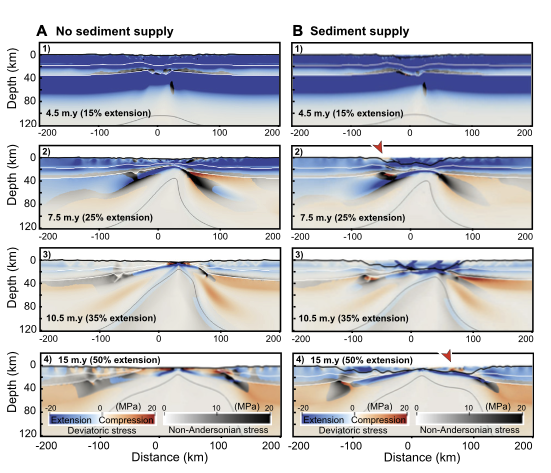
In the context of continental extension, transient compressional episodes (stress inversion) and phases of uplift (depth inversion) are commonly recorded with no corresponding change in plate motion. Changes in gravitational potential energy during the rifting process have been invoked as a possible source of compressional stresses, but their magnitude, timing, and relationship with depth inversions remain unclear. Using high-resolution two-dimensional numerical experiments of the full rifting process, we track the dynamic interplay between the far-field tectonic forces, loading and unloading of the surface via surface processes, and gravitational body forces. Our results show that rift basins tend to localize compressive stresses; they record transient phases of compressional stresses as high as 30 MPa and experience a profound depth inversion, 2 km in magnitude, when sediment supply ceases, providing an additional driver for the breakup unconformity, a well-documented phase of regional uplift typically associated with continental breakup.
![]()
